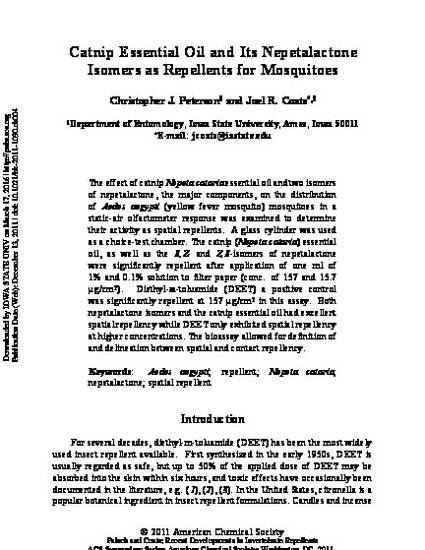
The effect of catnip Nepeta cataria essential oil and two isomers of nepetalactone, the major components, on the distribution of Aedes aegypti (yellow fever mosquito) mosquitoes in a static-air olfactometer response was examined to determine their activity as spatial repellents. A glass cylinder was used as a choice-test chamber. The catnip (Nepeta cataria) essential oil, as well as the E,Z- and Z,E-isomers of nepetalactone were significantly repellent after application of one ml of 1% and 0.1% solution to filter paper (conc. of 157 and 15.7 µg/cm2). Diethyl-m-toluamide (DEET) a positive control was significantly repellent at 157 µg/cm2 in this assay. Both nepetalactone isomers and the catnip essential oil had excellent spatial repellency while DEET only exhibited spatial repellency at higher concentrations. The bioassay allowed for definition of and delineation between spatial and contact repellency.
Available at: http://works.bepress.com/joel_coats/55/

Reprinted (adapted) with permission from Recent Developments in Invertebrate Repellents. 1090(4); 59-65. Doi: 10.1021/bk-2011-1090.ch004. 2011 American Chemical Society.